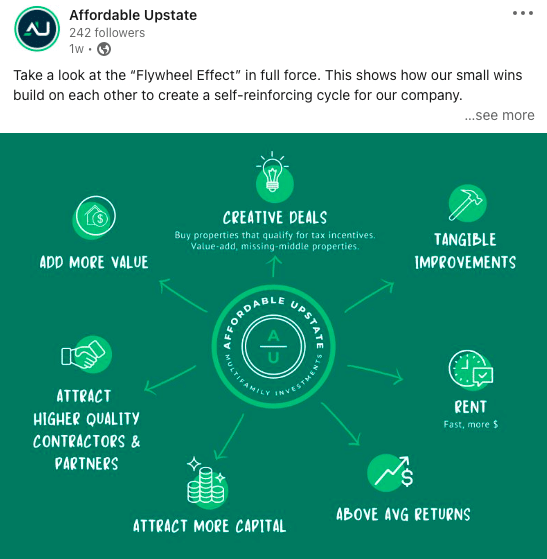Strategic planning and vision-setting can be daunting. Many confuse “strategy” for a distant vision, and they lack a clear plan to get there. Famed strategist and professor Richard Rumelt calls this “bad strategy.”
“A vision without a plan is a hallucination,” as the saying goes.
In all my work with executive teams on strategic planning, I’ve seen another trap that teams fall into: I call it “silver bullet hunting.” It’s the search for the elusive magic bullet that will solve everything. This leads to all sorts of issues and distracts the organization from sustained forward momentum.
The problem in the real world is that silver bullet solutions simply don’t exist.
Rather, greatness is a series of simple but sustained actions that build momentum.
I’d like to introduce you to a simple yet extremely powerful concept that can help you avoid silver-bullet hunting and help you build an organization of enduring value.
Good to Great by Jim Collins may be the most widely read and referenced business book of the past 20 years. It certainly seems that way.
In it, Collins and his team identify a powerful idea that is common among Good to Great companies: they focus on a series of simple (but powerful) strategic initiatives over and over again.
He called this Turning the Flywheel.
Think of it as the strategic habits of an organization that sustain greatness. The actions that build momentum with your brand.
Rather than swinging for the fences and constantly trying new things (what Jim calls the “doom loop), these great leaders know that focusing on their Flywheel over and over, for many years, is what brings sustained success.
Amazon has a strategic flywheel that hasn’t changed in decades. So does Nike, Vanguard, and probably most of the truly great companies you admire.
As part of the strategic planning process, I help leaders develop their Strategic Flywheel
Even more importantly, I help them stay focused and avoid distractions so they can build momentum.
It’s astounding what you can do when you know what to focus on and what builds value.
Below is an example of a Strategic Flywheel I built for a client some years ago. It not only allowed them to grow rapidly, but it also helped them eventually launch their own property management company as a direct result of focusing on turning the Flywheel. Now they’re the largest manager of affordable housing units in the Upstate of South Carolina as a result, and even more importantly they are strategically positioned to bring more value for their investors and clientele, thus continuing to spin their Flywheel faster and faster.

The problem with the Flywheel is that upon first glance it appears almost stupidly simple. However, that’s the power of a well-crafted Flywheel. It’s stupid simple. It’s not easy, but it’s simple.
You’ll find Nike’s Flywheel below.
Let me know if I can help you discover and turn your organization’s Strategic Flywheel.
